A ‘Royal Sovereign’ that became known locally as ‘Mournful Mary’
In April 2022 the BBC broadcast a radio programme entitled ‘The Death of the Foghorn’ which drew upon the recollections of people of both sexes who remembered with affection the loud and ‘characteristic’ sounds made by various lighthouses, lightships, piers and other places considered a risk to navigators in fog. It was interesting to hear the degree of nostalgia expressed by the contributors for the loss of these often strident sounds, generally better heard from a distance. In order of increasing audibility they were, reed horns, sirens and ultimately the diaphone, the Tonite explosive charge being obviously rather different. In the past, when all were regularly in operation there was often very little affection for these warning signals to the mariner. Going back in time there was one case that caused many protests from the folk of the Sussex coast.
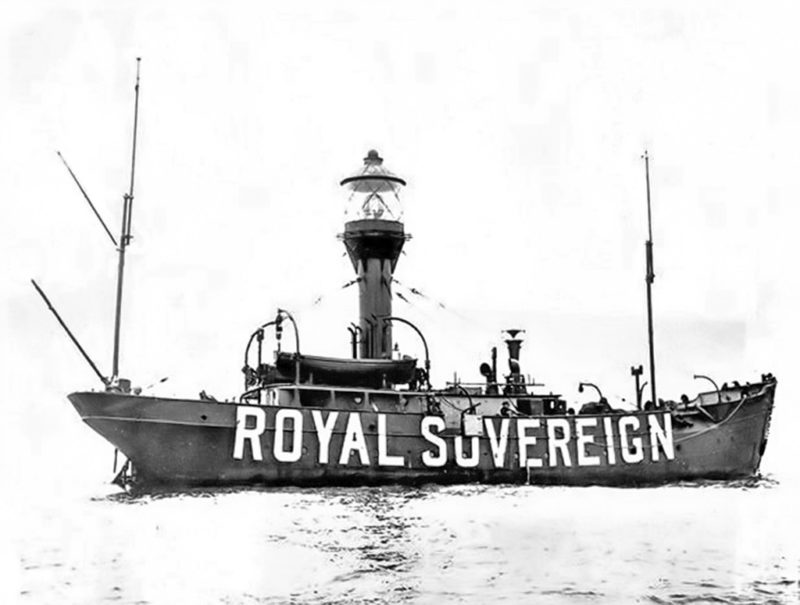
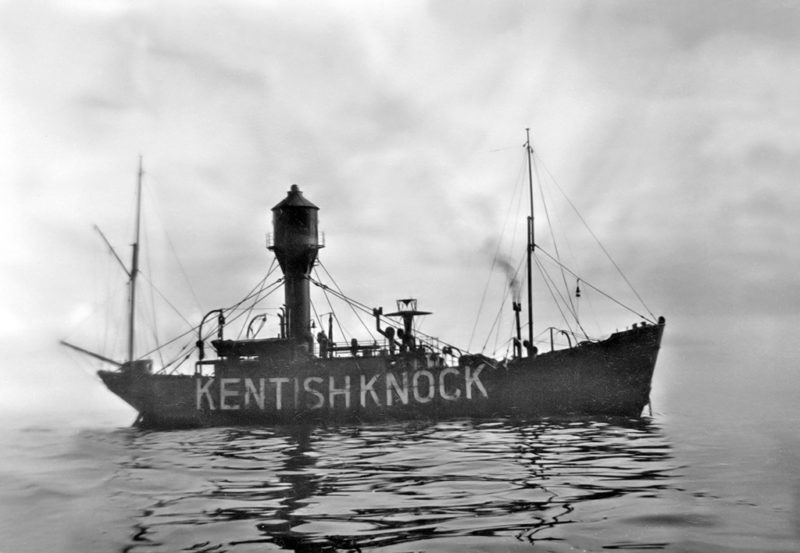
Eastbourne gains a Lightship
Light vessels were moored off sandbanks and shoals which were dangerous to navigation. They were equipped with increasingly powerful lights and foghorns to warn shipping of their existence. Royal Sovereign Shoal off Eastbourne was one example but it was only first marked as late as 1875. Initially wooden light vessel 46 fulfilled the role, but to warn away mariners in fog it was solely equipped with a Chinese gong. Not a version similar to that used by J. Arthur Rank at the introduction to his films but more of a large dinner gong measuring 21 inches in diameter which was effective at short range, but unlikely to disturb the slumbers of the inhabitants of the local seaside towns.
Around 1900 a state of the art new lightship, LV69, was towed out to mark the Royal Sovereign station. It was equipped with a steam boiler that drove a siren giving 2 blasts every 45 seconds (each blast lasted two-and-a-half seconds), more suited to steam ships that travelled faster and approached hazards more rapidly. This installation was similar to other vessels stationed around the coast, some giving combinations of high and low notes. No complaint was made by those ashore.
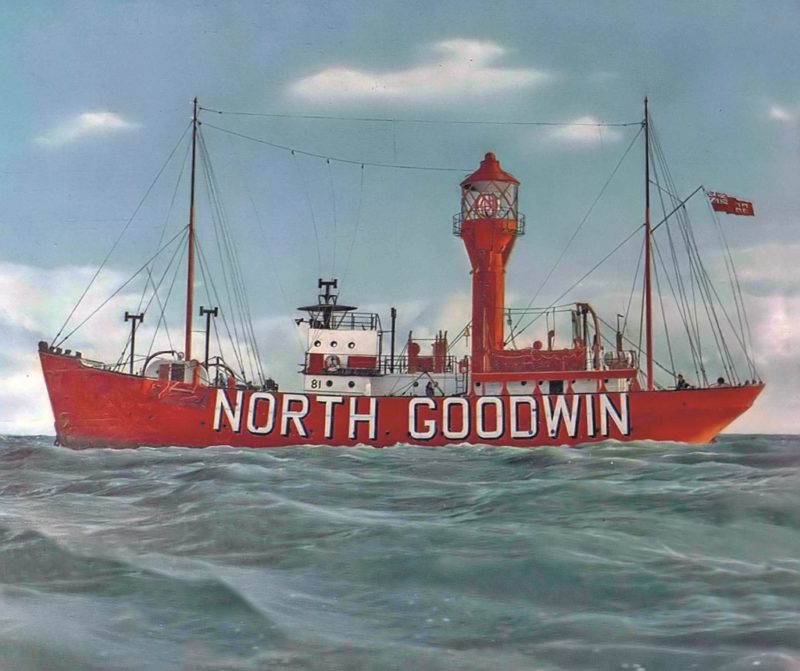
A Loud Penetrating Foghorn Announces the Arrival of LV81
Years passed and Royal Sovereign being considered by Trinity House an increasingly important position, in January 1927 the Brethren decided to install there the first ship lit entirely by electricity and with a prismatic Fresnel lens giving it a beam of around 750,000 candle power. To compliment this, the vessel, numbered LV81, had a ‘K’ type diaphone fitted by Chance Brothers of Smethwick. Powered by compressed air the foghorn was second only to the ‘L’ type, the most powerful available, normally only installed on lighthouses built on headlands of international importance. The diaphone was an upgraded version of the siren which equally produced a rapidly rising note but concluded, unlike the former, with a deep low note in the form of a ‘grunt.’ It gave two such blasts with the same frequency and duration as before.
Soon fog descended requiring the crew of LV81 to start sounding, which very quickly precipitated an avalanche of correspondence from Bexhill and Eastbourne. This latest was no doubt a much louder and less mellow sound relative to the steam siren of the previous ship, leading to a number of correspondents resorting to poetry to describe their concerns:-
“Oooom-ugh, oooomm, Oooom-ugh, oooomm,
You deepen the gloom,
‘Tis a sound of doom,
Your mournful song
The howl of a ghoul
Is loud and long.
Or moan of lost soul,
That sobs from the tomb……”
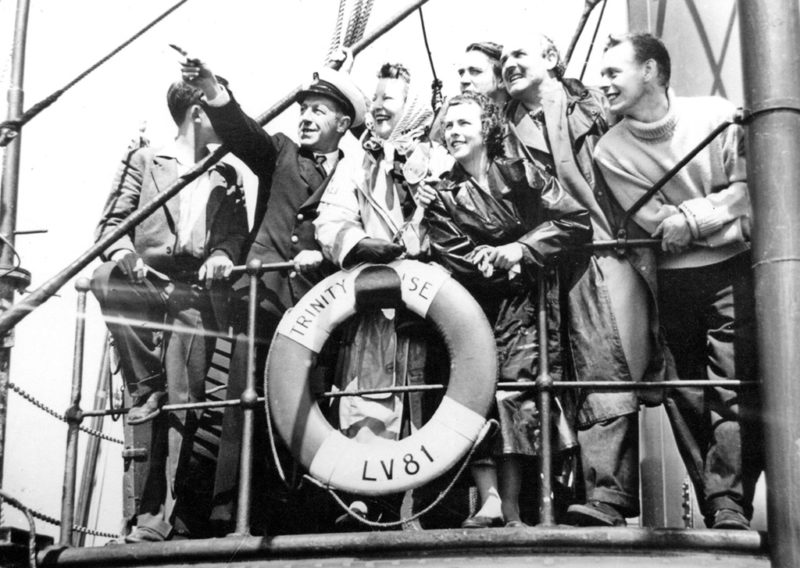
But J.E.D., under the heading of “The Lightship Replies”, came to the vessel’s defence:-
“Good folk of Bexhill, pray don’t growl
If you are waked by my raucous howl,
I, “The Sovereign,” am really proud,
That my new voice is long and loud.
For those who go down to the sea are mine,
It’s mine to guard them in storm or shine.
When the foul fog fiend spreads his net,
And perils are hidden and pilots fret,
My iterant cry bids sailors beware,
And, steering wide, they escape the snare.
Then those who go down to the sea in ships,
Bless my name with grateful lips.”
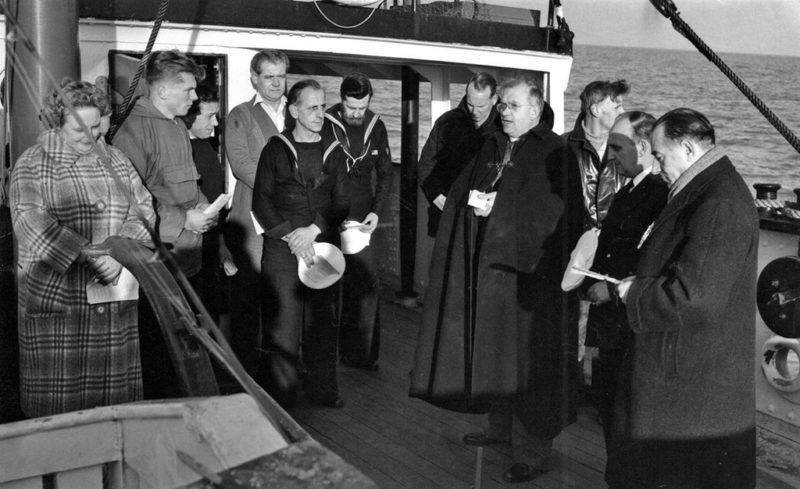

Public Complaints Intensify
The situation was summed up by one F.M. writing to the Bexhill Observer with “An Appeal for Relief.”
“Sir, – The expressions of opinion on behalf of Bexhill residents, which have already come within my knowledge, as to the undesireableness of so indiscriminate a broadcasting of noise as that recently adopted by the foghorn have convinced me that your utterances on the subject have been welcomed in many quarters.”
“We are all conscious of our indebtedness to science for the additional security afforded to sea travel by the use of wireless, and of machinery indicating by means of sound the outlines of a danger zone.
It by no means follows, however, that because the preservation of life is the most important consideration, the health and comfort of the general public is of no importance at all. In the substitution of machinery for other methods, there is often a more than necessary increase of noise, and it should be the duty of science to obviate this. In cases in which the public health is involved, it should rest with the scientists to prove that the increase of noise is no more than is necessary to ensure complete efficiency.
In the absence of such proof the public has no alternative but to appeal to the proper authorities for relief.”
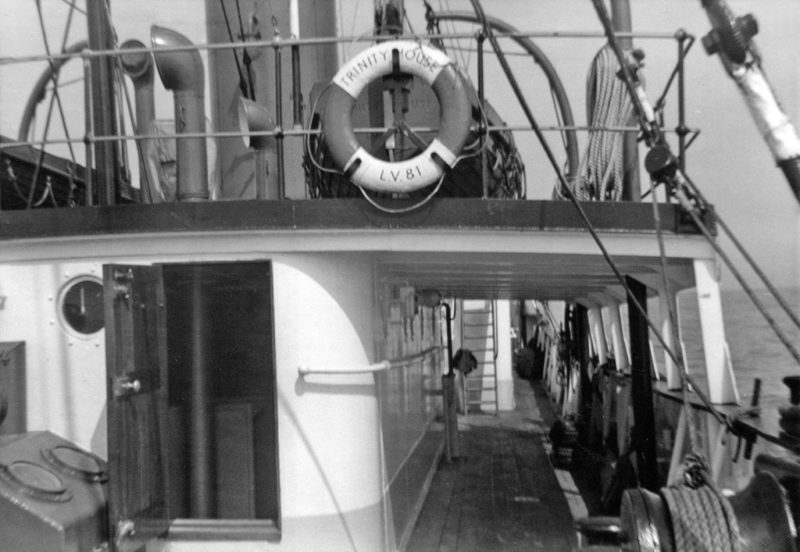
The Offending Vessel is moved to a more Remote Location
The result was that the lightship became generally known as ‘Mournful Mary’, a name that was emphasised when persistent fog meant that the ship sounded for nine days and nights without ceasing. Such was the level of public complaints that Trinity House had to react and eventually agreed to withdraw the ship around 25th September 1928, replacing it with the older LV67 which had a conventional air-driven siren of less power. Steam boilers had been replaced by semi-diesel driven air compressors by 1922, LV69 being about the last to be converted. That ship, together with LV67, had incandescent oil burners to provide a light of some 200,000 candle power which to some extent compensated for the loss of the electric lamp of LV81.
The crew remained rather contemptuous of the complaints from the shore, saying the malcontents should come and try sleeping four yards from the diaphone. They enjoyed extra payment when it was sounding, to the extent of 2d. an hour. While studying the history of the light vessel service I suggested to some of the older lightsmen that this was rather a derisory sum for enduring such an infernal noise, only to be reminded that beer cost 4d. a pint in those days and so the racket was tolerated. In fact there were occasions when ships passing other light vessels noted their horns were working in clear weather. Like every regulation it was there to be broken when there was money involved.
With its removal, relative peace returned but Trinity House had the last word, saying, “That it is not to be induced by popular clamour into minimising the effectiveness of any important seamark, which is quite in accordance with official tradition”. LV81 was, however, ‘banished’ to the relative isolation and obscurity of the Kentish Knock, the outermost sandbank of the Thames estuary in a position roughly half way between Margate and Harwich. In fact light vessels 82, 83 and 84 had also been fitted with the ‘K’ type diaphone but they do not seem to have elicited any particular complaints. They were stationed off the East coast, LV82 at Outer Dowsing and LV84 at Outer Gabbard, both significantly further from the shore than Royal Sovereign. Ultimately all had their diaphones downgraded to ‘G’ type which became the standard for all new vessels built for the Light Vessel Service. In real terms this meant that the amount of air being expelled with each blast was reduced from 45 to 23 cubic feet per second, effectively halving the volume.
Unsurprisingly, LV81 seems to have led a quieter life at the Kentish Knock in terms of public scrutiny. She also seems to have been spared the occasional collision or the trauma of breaking adrift. What eventually threatened her was the enemy, and with attacks on other vessels intensifying she was brought into Harwich on 30th May 1940. The rest of the war was spent either in the London Docks or in the river, where she spent the years 1942 to 1945 on mine watching duty in Sea Reach. Being one of the larger and more expensive vessels she was kept out of harms way and not automated, as a number were, for continuous war service in the hazardous waters of the North Sea.
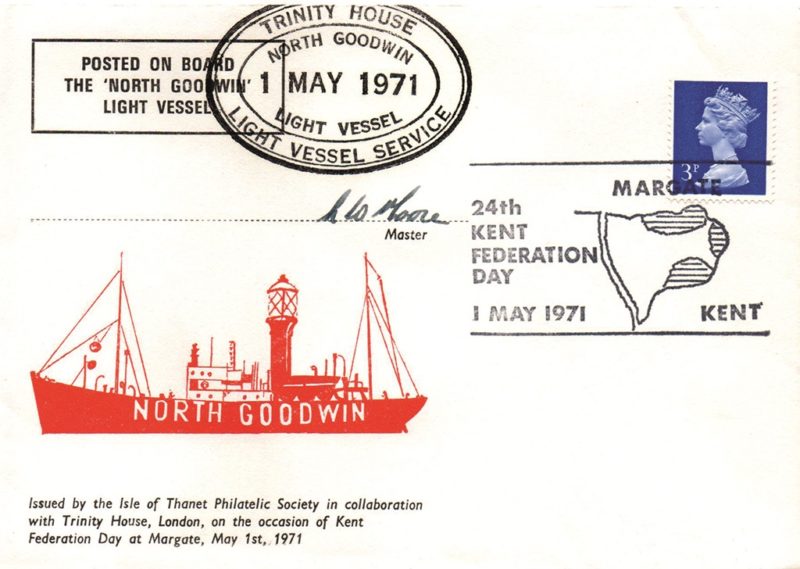
LV81 is transferred to North Goodwin
Following the War, the ship was refitted and sent to the Owers off Selsey Bill for a short period, not far from her original placement. Her next move was to be her last, for Trinity House decided she should be sent to the North Goodwin for Christmas 1947 just in time for one of the hardest winters on record. She was to remain near to the notorious sands, with the usual three-yearly breaks for repairs and refitting, until February 1974.
This move brought her close to the resorts of Margate and Ramsgate, where the vessel was accepted by the residents with no complaint and regular visits were made by local dignitaries and tourists alike. I remember as a child hearing the ship’s foghorn on misty summer mornings, finding it soothing if anything, and no longer the ghoul of Bexhill. Due to this close contact with the shore the activities and problems associated with the ship are well recorded.
A difficult situation arose on 20th October 1951 when a youth in a small boat was seen to be in difficulties. Contrary to regulations the lightsmen lowered a boat and set out to help the youngster, which they did, but then found the tide too strong to regain the lightship. A call soon brought out the Ramsgate lifeboat which towed their boat back to LV81 and took the lad and his boat ashore. Given their position this was not such a risky thing to do but on the more remote stations it could be a hazardous undertaking if ultimately a significant part of the crew could not return to their ship.
Another concern was the lack of good holding ground leading to the ship dragging its anchor in the heavy weather they were faced with on occasion. A.V. Fryatt was a lightsman between 1948 and 1960, serving at the Newarp, Tongue and North Goodwin. Of the last he remembered, “On the night the South Goodwin lightship was lost, 27th November 1954, ours dragged seven cables, just over a kilometre off station. Having served most of my Naval service in destroyers, I thought I was back on one! We did everything in the North Goodwin except capsize. I really thought, with all my wartime experiences, that this was ‘my lot!’ At age 90 the memory of that night is still very vivid”. Her 4-ton anchor was replaced with a 5-ton version on this occasion.
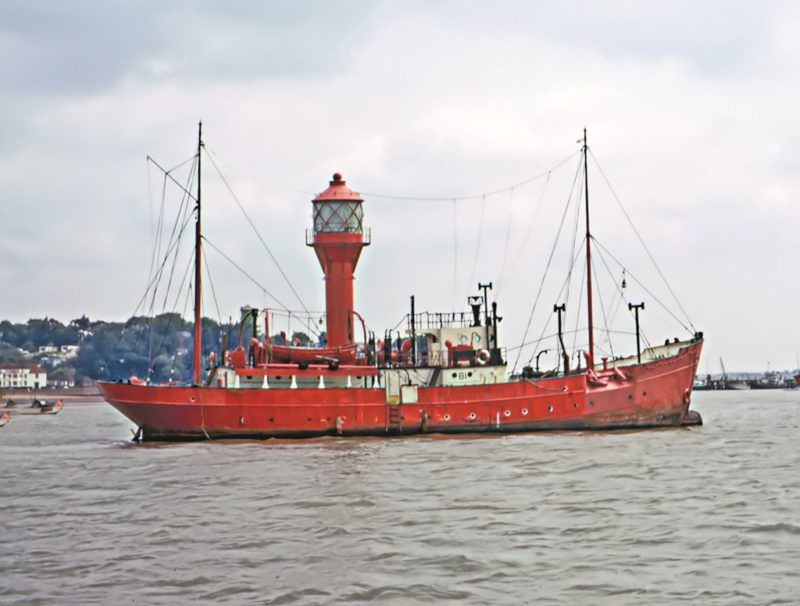
Father Christmas Arrives by Helicopter
On the lighter side were the regular and much anticipated visits by the Mayor of Ramsgate and local vicar with the Christmas turkey and general seasonal gifts. In 1953 an attempt was made to land ‘Father Christmas’ by helicopter from the nearby US air base at Manston. Due to the top hamper of the lightship this did not prove possible and so the red and white clad figure was lowered into Douglas Kirkaldie’s boat Salvor which was standing by. Doug had a contract with Trinity House to provide supplies and carry out simple maintenance jobs when required and he often also took out small parties of visitors.
Some like Hughie Green visited in their own yachts, Hattie Jacques also came aboard.
A Popular Location for Visitors
Another visit of note was that of the Grove Family. Light vessel master Archie England welcomed them aboard from the reserve Ramsgate lifeboat on a rough day in May 1956, Grandma Grove not proving to be a good sailor. Their programme was one of the first TV ‘soaps’ and had a considerable following. The recently departed Christopher Beeney, later remembered for his role in ‘Upstairs, Downstairs,’ was present on that trip, notable also for bringing out a TV set donated by the populace of Ramsgate, the other two Goodwin vessels getting theirs by Christmas.
The regular pleasure steamers arriving from London in summer had time to take an afternoon cruise before returning to the Thames. These trips were often to the Tongue or North Goodwin ships, where although they could not board, the passengers were able to study these unusual vessels at first hand; newspapers usually being passed or thrown across to the thankful crew.
Norman ‘Pony’ Moore joined North Goodwin as master about 1957, having commenced his service in November 1939 and spent ten months on the lightship ‘Juno’ off the Normandy beaches in 1944-5. Donald Allan was opposite Norman on the relief. An Irishman by origin he was living in London by this time. A keen dancer he would practice aboard the lightship holding a pillow for a partner. Norman recalled that generally LV81 rode very well in a seaway. He remained with the ship until it was withdrawn in 1974, when he moved on to the Cork station.
Both of these masters signed a first day cover to commemorate Kent’s Federation Day on 1st May 1971. This was organised by the Isle of Thanet Philatelic Society in collaboration with Trinity House. Each was stamped officially aboard the lightship. North Goodwin was to be recognised again on cover No.18 of the RNLI Official Series at the time of the Christmas Goodwill visit of 16th December 1975 by RNLB Michael and Lily Davis. Although LV81 had been sold by then, artwork of that ship was still used.
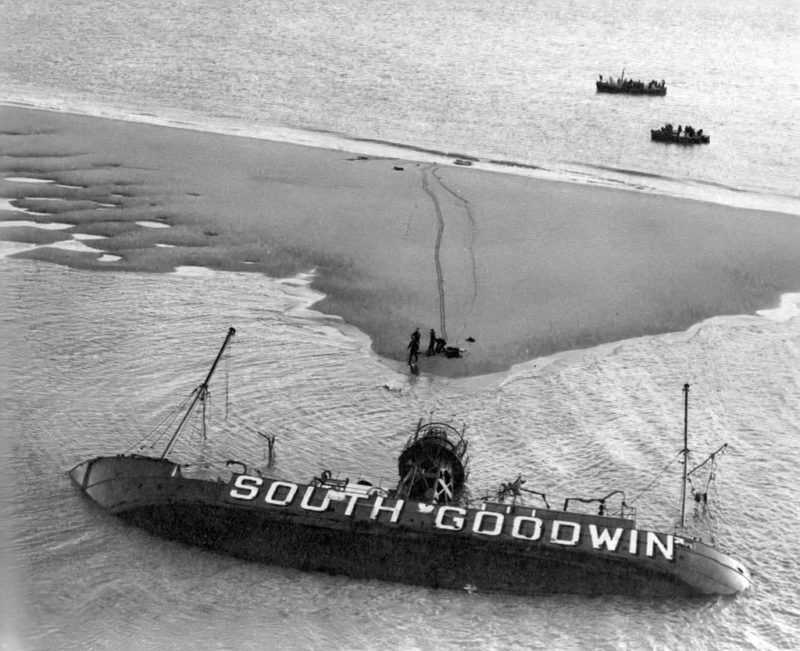
A Lucky ship despite its Controversial Origin
Additionally lifeboats had been called out to the ship in October 1957, July 1963 and July 1973 to take off sick members of the crew, the unfortunate seaman on the 1963 call having a temperature of 103°. These sickness figures were probably typical of any light vessel station in relatively sheltered waters and on the whole LV81 seems to have been a lucky ship, far different from her companions at the East Goodwin, the various vessels stationed there suffering innumerable collisions. Separately, LV90 was lost with all hands when she parted from her moorings at the South Goodwin in November 1954, only a government ornithologist being saved by a USAF helicopter from Manston, the same flight that had taken Father Christmas to LV81 almost a year earlier.
By 1965 the light character remained a group of three flashes of 1,200,000 candle power every 20 seconds, while the somewhat muted diaphone gave a group of three blasts of 2 seconds every minute. Her service at the north of the Goodwin Sands ended quietly in February 1974, the vessel being sold to a Greek buyer the same year for £8,000.
Returning to the original theme and title of ‘Mournful Mary,’ I was talking to a member of the management of Stone Chance who, then in retirement, remembered that when the big diaphones were tested in the works at Smethwick, he found they had two effects, firstly that any horse in the town would bolt and secondly that if he needed to pass water they proved a very effective stopcock. It is to be hoped that not all who served on the lightships so equipped suffered the same impediment. These powerful devices were phased out with the automation of the light vessels in the 1980s without ceremony, electricity then being generated for the navigation light and an oscillating fog signal of higher pitch and much lower power, solar panels later replacing the continuously running equipment.
Similar to the earlier coastal residents, poet John Betjeman, who died in1984, had not shown much enthusiasm for the fog horn either but they were still active in his lifetime:-
‘A mist that from the moor arose
In sea-fog wraps Port Isaac bay,
The moan of warning from Trevose
Makes grimmer this October day.’
Tregardock, 1966
The nostalgia expressed at the beginning of this story seems to have arisen due to time lending enchantment to these ‘lost sounds.’

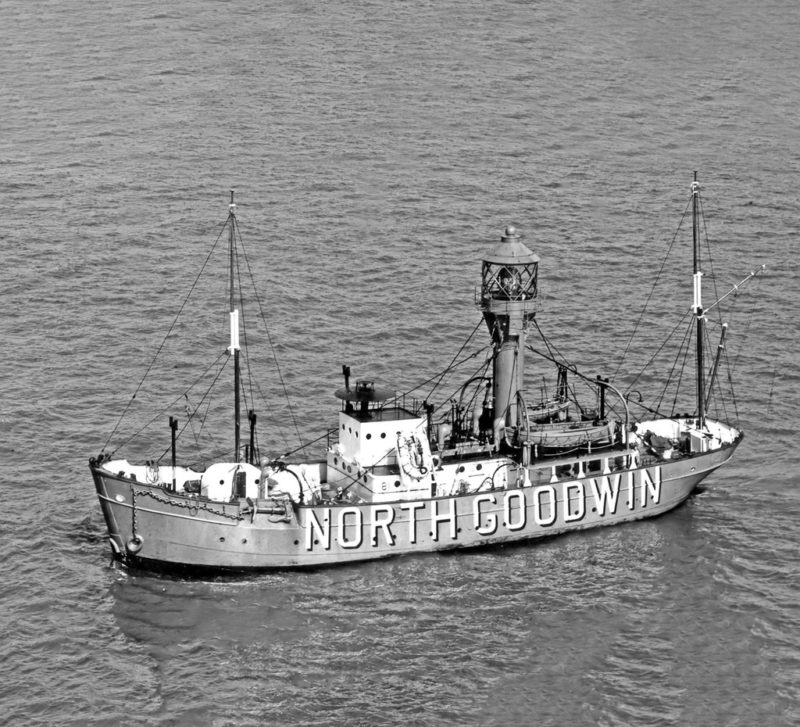


Comments
Sorry, comments are closed for this item